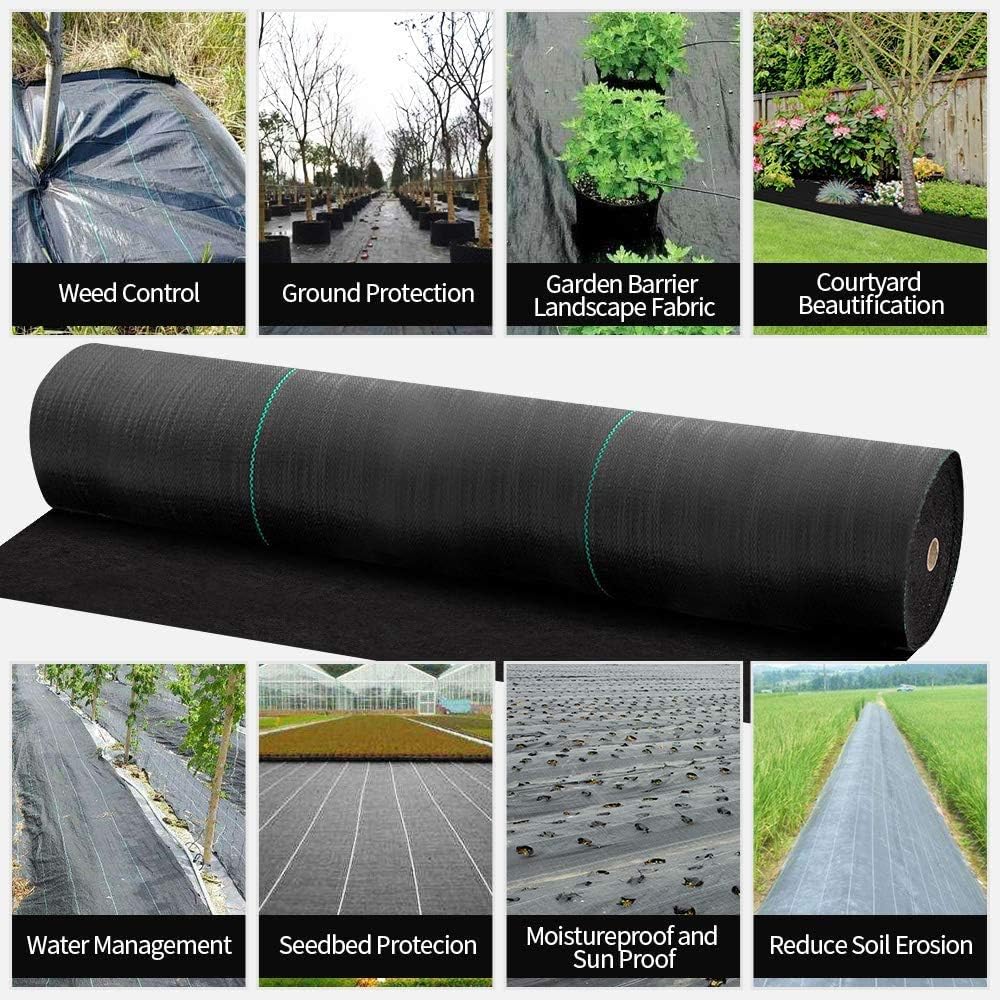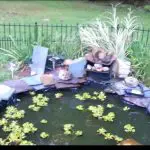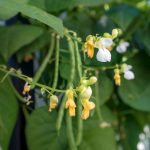What Are Smart Pots Made of?

Traditionally gardening started with digging up the soil of a fertile piece of land and so on. In this edge of the modern era, gardening is no more a subject of a vast area.
Moreover, it has been turned into pots and been placed on the rooftops or inside the house. Different trees require various sizes of the pots due to their size.
Smart pots brought a revolution in gardening. Their building ingredient, service duration, and temperament are the main reasons behind such popularity. We need to be sure about the necessity of using smart pots in our garden.
What Fabrics Smart Pots Are Made From?
Let’s discuss first on what are smart pots actually.
Smart pots are modern day gardening equipment that is made of certain fabrics. Smart pots provide the plants with a better environment than traditional pots.
If we want to learn about smart pots properly, we need to divide the smart pot ingredients into two parts-
- Smart Pot Fabrics
- Additional Smart Pot Accessories
Smart Pot Fabrics
The very question arises in our mind is, what material are smart pots made from? Well, to answer that we can focus on the followings-
Landscape Fabric:
We are familiar with the weed barrier. These are made from the same fabric as smart pots. In other words, weed barriers are smart pots.
In this type, GSM count styles indicate the thickness of the fabric. The thicker it is, the less permeable and heavy the pot will be. Usually, the GSM fabric thickness counts within 260g- 400g.
There are two types in this GSM count type fabrics. These are: Woven and Non-woven.
To know them at a stance, let’s look at the brief comparison-
| Woven | Non-woven |
| Made from polyester or polypropylene. | Made from linen or polypropylene. |
| Not densely porous. | Dense porous with tiny holes. |
| Works perfectly in a rock or gravel-based garden. | Works nicely as container fabrics. |
| Blocks sunlight, air, and moisture. | Blocks sunlight only. |
| Cheaper in price. | A bit costly than woven fabrics. |
Today’s smart pots are mostly made from the non-woven fabrics containing lots of pores which allows great aeration. But there are some problems too. Let’s look at them!
| Pros | Cons |
| Allows air and moisture. | It blocks the sunlight. |
| Blocks or minimizes the sun’s decomposing effects. | Durability is a bit short, about 2-3 years. |
| Lifespan of few years.(Is it Pros…?) | Not recommended for above ground gardening. |
| UV-treated fabrics. | |
| Economically friendly. |
Where can we find these?
- 260g landscape fabric:👉Buy on Amazon
- 300g landscape fabric:👉Buy on Amazon
- 400g landscape fabric:👉Buy on Amazon
Geotextile Fabric
If you don’t want to go for commonly used woven or non-woven GSM fabrics, there is an upgrade, geotextile fabric. This type is made from polypropylene or polyester.
This type of fabric is also available both in woven and non-woven form. But non-woven geotextile fabric is preferred.
Let’s take a look at the pros and cons of this type.
| Pros | Cons |
| Root cycling can be prevented. | A bit costly. |
| More air-pruning induced. | Recycle isn’t recommended. |
| Duration of 3-4 years. | Requires scheduled watering. |
| Made of stable, inert chemical. | Water drainage system is poor. |
| Free of BPA.(Please mention the elaboration of BPA….) | |
| Prevents wet soil as more aeration is ensured. | |
| Can be washed in machine and stored for a long time. |
Where Can I Find These?
- MEARTEVE 10 Pack 5 Gallon Premium Grow Bags, Heavy Duty Nonwoven Fabric Plants Pots with Handles, Indoor & Outdoor Grow Containers for Vegetables and Fruits
- Upgraded 10 Pack 10 Gallon Grow Bags, Heavy Duty Non-Woven Fabric Plant Pots with Strong Handles, Vegetable Flower Growing Containers
Additional Smart Pot Accessories
Supportive Sticks/Poles
It isn’t included in every package. Some of them might have loops or places to add sticks or poles.
You also can use PVC or 2”x2” lumber to build the frames for the pot. But the loop size should be an exact match to the PVC or lumber.(A sample image is needed for the above passage….)
Benefits of the accessory:
These help to maintain a well structure of the pot. It helps the young or weaker plants to hold themselves up against the odd situation.
It also helps in preventing damage due to movements of the plants in the strong wind and additionally it saves up gardening space.
The Handles
One of the common complains of the gardeners is, the smart pots have no handle. Thus, it becomes tough to move the plants. Also, this might cause plants being damaged while moving from place to place.
The good news is many of the smart pot producing industries are adding handles in their products now a days.
Environment Issue: Are smart pots made of environment friendly material?
It is an important question. By observing most of the common smart pots, this can be concluded that, smart pots are not lead-free always. And thus, they might cause a disturbance to the environment in the long run.
To ensure the smart pot being eco-friendly, packaging details can be checked whether the smart pot is made of environment friendly ingredients or not.
Size of Smart Pots:
Now we are going to discuss on the size of smart pots that we need in our garden. To determine the size, we need to focus on the followings-
- Required soil amount
- Root growth
- Soil compression
- Irrigation
Required Soil Amount
Different types of plants require different amounts of soil to be grown in a container environment. More or less amount of soil than required amount would result in quick dry-outs or wilting.0
Root Growth
Plants always need to develop good root system and spread the roots out as much as they can. In case of a potted plant, it doesn’t have that much of soil like in the land.
In order to have ensure a healthy plant life, we must put the required amount of soil with proper treatment.
Soil Compression
After putting the soil in the smart pot, the soil will be compressed obviously. Usually, the percentage can be 15-20%.
So, we need to put at least 20% more soil at the beginning so that after the compression there will be the right amount of soil in the pot for the plants.
Irrigation
In the last step, we should consider the irrigation system. Smart pots come up with a sophisticated porous structure. So, whenever the plants will get water, the excessive water will be runoff throughout the pores of the pot. Thus, water-clogging will be prevented automatically.
To prevent too much water loss at dry season, the soil amount can be doubled. So, that the root area always remains moisturized. But it is not recommended to reconsider the fabric type of the smart pot in order to save the water.
Identifying authentic smart port: How to?
How can we identify fake smart pots? Let’s plan!
Since 2006- after the launch of production of consumer-grade smart pots, there had been a huge wave of various brands manufacturing smart pots and their fabrics. But not all of them are authentic and good for gardening.
Yes! We now are going to talk about pots that are fake, low in quality and short in performance. Having a close look and considering some facts will help you identifying the fake smart pots.
- Usually these fake smart pots are made in China, lack in both consistency and quality.
- They might be rich in lead, BPA and harmful chemicals. Planting your lovely garden into such smart pots might destroy the plants in no time.
- The fabric might come with extra stitching and telltale. Such outlook reveals the poor quality and increases the chance of being torn apart while filling soil.
- These pots might be either too thin or too thick. These pots will cause problems in drainage, root circling, rotten root and other problems as well.
So, how would you determine if a pot is authentic or fake?
Well, you have to watch and find what fabric is used in building the smart pots and what accessories do they come with.(Very short and narrow explanation. Need more detail if possible)
Smart pots are very useful and helpful. They are considered a gardener’s one of the best friends. With cautious eyes anyone can have authentic smart pots to start with their gardening. Adding a little more accessory might boost up the enthusiasm of the gardener and also help the plant in reaching good health.
The FAQs About Smart Pots
Q. What are plant pots made of?
A flowerpot, planter, or plant pot is a container in which flowers and other plants are cultivated and displayed. From the very beginning till modern days, they are made from terracotta.
Flowerpots are now often also made from plastic, metal, wood, stone or sometimes biodegradable material.
Q. How long do smart pots last?
Depending on the quality and type of the fabric, smart pots can last from 2 years to 5 years.
Q. Are plastic pots bad for plants?
Plastic pots are long lasting, less weight. Plastic pots help soil to hold the moisture. Also, it is made of inert material and thus harmless for the plants.
Q. Why is the color of plant pots important?
Color of the pots determine how it will treat the heat coming from sunlight. Dark colored pots absorb more heat, which might damage the plant root system by causing excessive evaporation.
On the contrary light-colored pots reflect most of the sunlight which helps the pot environment remain comparatively cooler.
Q. Will roots grow through smart pots?
Yes! Roots will grow through smart pots but that depends on the fabric style of the smart pots. Better root growth ensures better and faster plant growth.
Q .Can you reuse smart pots?
Definitely! Smart pots can be used several times. Before reusing a smart pot, washing them will be a smart move.
Q. Are fabric pots better than plastic?
Fabric pots have ideal condition for growing a good root system, while providing the best aeration for the plants. In addition, fabric pots or smart pots are also reusable and durable.
On the other hand, plastic pots aren’t reusable in many cases, cheaper in price but do not ensure good root growth.
In short, fabric pots or smart pots are way better than the plastic ones!
Q. Can you over water fabric pots?
In case of traditional ceramic plant pots, over watering might result in drowning the soil of the pot as well as root system.
On the other hand, smart pots made of different fabrics are tough to be soaked under water as they have a large number of pores to run off excessive water.
Q. Why are smart pots better?
Smart pots help plants by avoiding flooded condition as they have a good porous system in their fabric. Having these well porous systems also allows them to provide a good aeration and results in good root growth.
Q. Can you transplant from fabric pots?
Yes! Transplanting from modern fabric pots are a lot easier than transplanting from traditional ceramic or plastic pots.
Related Reading:
Happy Gardening!










